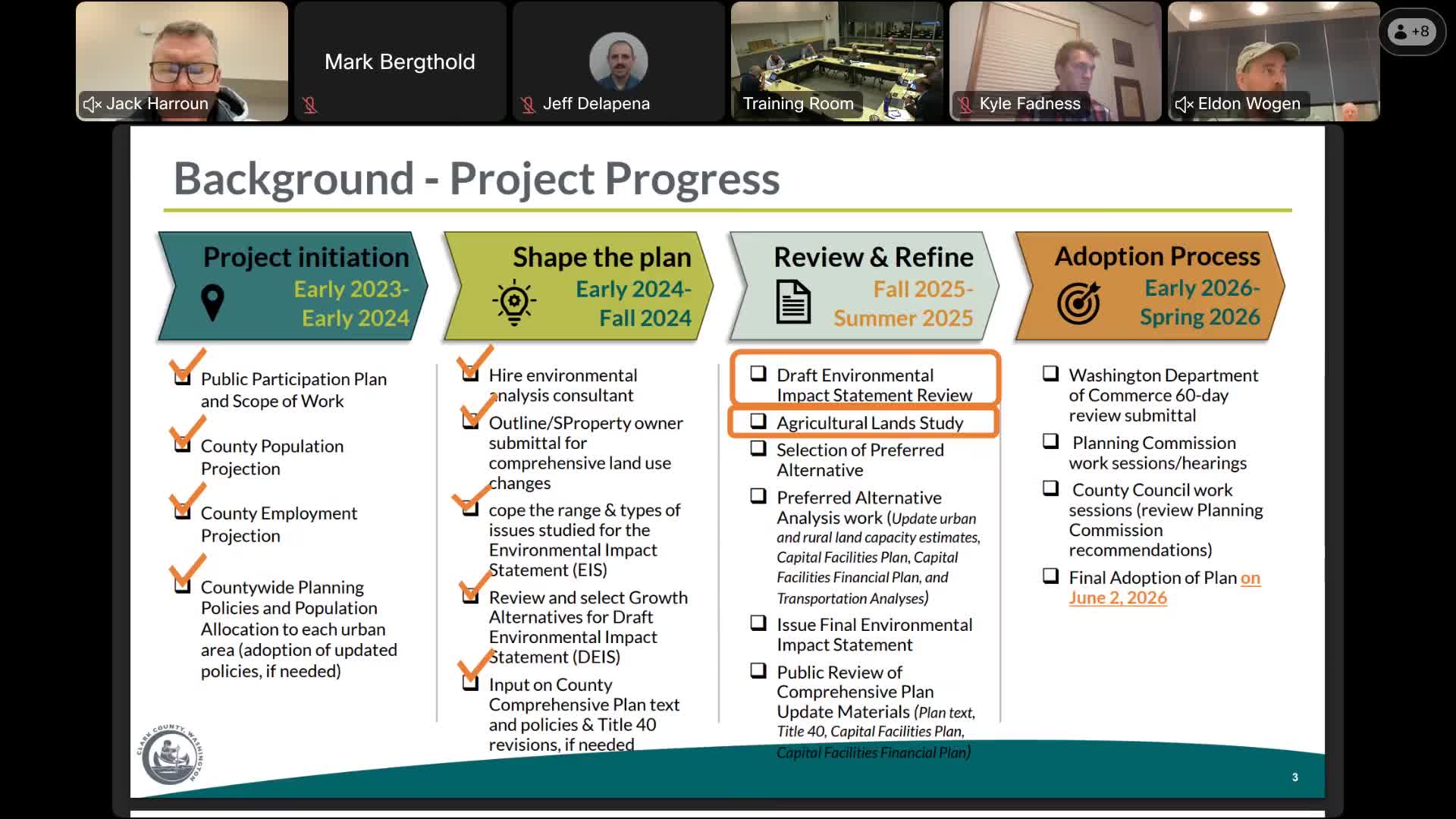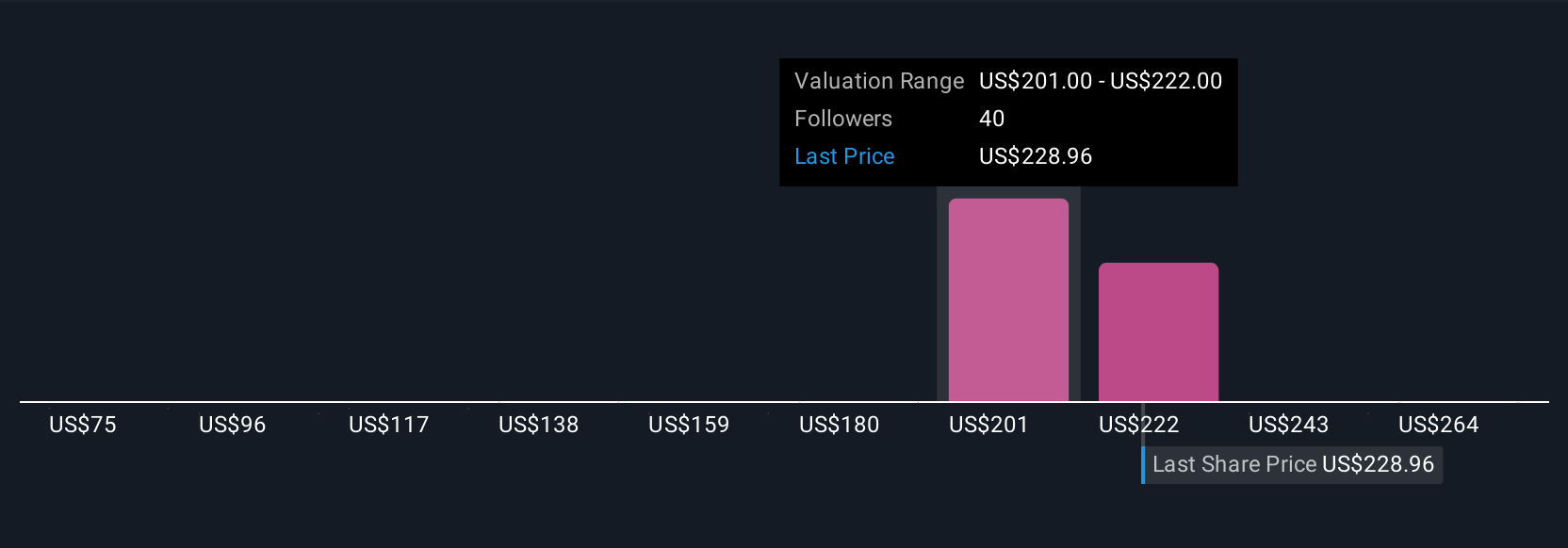Managing migration under pressure – Brookings

Report on Migration Dynamics and Sustainable Development Goals
This report synthesizes recent data and policy analysis concerning global and regional migration, with a particular focus on its alignment with the United Nations Sustainable Development Goals (SDGs). It examines the economic, legal, and humanitarian dimensions of migration, underscoring the necessity of well-managed policies to achieve the 2030 Agenda for Sustainable Development.
Economic Dimensions of Migration: Advancing SDG 8 and SDG 1
Migration is a powerful driver of economic progress, directly contributing to SDG 8 (Decent Work and Economic Growth) and SDG 1 (No Poverty). Effective immigration policies can harness this potential for the benefit of both host countries and migrants.
Fostering Economic Growth and Decent Work (SDG 8)
- Labor Market Contributions: Immigrants play a crucial role in stabilizing labor markets. Reports indicate that rising immigration has helped cool overheated labor markets (Cohen, 2024), fill critical labor shortages (FWD.us, 2025), and address the imbalance in job openings-to-unemployment ratios (The Fred Blog, 2024). The expansion of programs like the H-2B visa for temporary workers further highlights this need (American Immigration Council, 2024).
- Economic and Fiscal Impact: The Congressional Budget Office (2024) confirms that immigration surges positively affect the economy and the federal budget. Studies consistently find that immigration is a net win for the U.S. economy (American Immigration Council, 2016; Blau & Mackie, 2025), with Venezuelan migrants alone driving significant economic boosts in host countries like Colombia (IOM, 2024) and across Latin America (Arena et al., 2025). Conversely, analyses warn that mass deportations would deliver a catastrophic blow to the U.S. economy, undermining progress toward SDG 8 (United States Joint Economic Committee, 2024).
- Innovation and Entrepreneurship: Immigrants are key drivers of innovation (Hunt & Gauthier-Loiselle, 2010) and entrepreneurship. A significant number of U.S. billion-dollar companies were founded by immigrants, demonstrating their contribution to job creation and economic dynamism (Anderson, 2022).
Policy Frameworks, Justice, and Strong Institutions (SDG 16)
Achieving SDG 16 (Peace, Justice and Strong Institutions) requires migration governance systems that are fair, humane, and effective. This includes providing legal pathways, ensuring access to justice, and upholding the rule of law.
The Imperative for Orderly, Safe, and Regular Migration (Target 10.7)
- Legal Pathways vs. Irregular Crossings: Evidence suggests that offering more lawful pathways for migration significantly reduces unlawful border crossings (Clemens, 2024). Programs such as the parole process for Cubans, Haitians, Nicaraguans, and Venezuelans (CHNV) have proven successful in this regard (FWD.us, 2024). However, navigating legal immigration channels remains exceedingly difficult for many (Bier, 2023).
- Policy Ineffectiveness and Reversals: The pandemic-era Title 42 expulsions policy was found to be largely ineffective at shutting down the border and, in some cases, contributed to increased repeat crossings (Chishti et al., 2024; Owen, 2025). Furthermore, the termination of Temporary Protected Status (TPS) for nationals of Afghanistan, Cameroon, Haiti, and Venezuela threatens to destabilize the lives of thousands who had followed the rules, undermining the goal of orderly migration (Federal Register, 2025; Jordan et al., 2025).
Ensuring Access to Justice and Due Process
- Immigration Court Backlogs: A critical failure in providing access to justice is the immense backlog in immigration courts, which now exceeds one million affirmative asylum cases (Jacobs, 2024) and is projected to grow without significant staffing increases (Katz, 2024). This delay denies timely and fair hearings, a cornerstone of SDG 16.
- Upholding the Rule of Law: Reports of administrations defying judicial orders on deportations (Caputo, 2025; Feuer, 2025) and threats against immigration attorneys (AILA, 2025) represent a direct challenge to the principles of strong and accountable institutions.
- Detention Policies: The use of an immigration detention bed quota has been criticized as promoting arbitrary detention, which is inconsistent with international human rights norms and the justice targets of SDG 16 (Sinha, 2016). Conditions in detention centers, especially during health crises like COVID-19, also raise significant concerns (Brennan Center for Justice, 2020).
Humanitarian Dimensions and Inclusive Communities (SDG 3, SDG 10, SDG 11)
A sustainable approach to migration must prioritize the well-being of migrants and their successful integration into host communities, aligning with SDG 3 (Good Health and Well-being), SDG 10 (Reduced Inequalities), and SDG 11 (Sustainable Cities and Communities).
Protecting Vulnerable Populations and Refugees
- Unaccompanied Children: The situation of unaccompanied children at the border constitutes a human rights crisis that requires policy changes to ensure their safety and well-being, in line with international protection standards (Ataiants et al., 2018).
- Refugee Resettlement and Sponsorship: The U.S. has rebuilt its capacity to resettle refugees, supported by community-based sponsorship models like the Welcome Corps (Chishti et al., 2024; Welcome Corps, 2025). These programs have been shown to improve early labor market outcomes for refugees and foster community integration, directly supporting the goals of building inclusive societies (Crane Linn, 2022).
Building Sustainable and Inclusive Cities (SDG 11)
- Federal Support for Local Communities: Federal initiatives such as FEMA’s Shelter and Services Program are vital for helping local governments manage the humanitarian reception of migrants, thereby promoting sustainable and resilient communities (American Immigration Council, 2024).
- Urban Response to Migration: Cities like New York and Chicago are at the forefront of the response to the migrant crisis, developing dashboards and programs to manage new arrivals. Their experiences highlight the critical need for coordinated planning and resources to ensure that cities remain inclusive and can provide services for all residents (City of Chicago, 2025; Ferré-Sadurní, 2024).
Global Partnerships for Sustainable Development (SDG 17)
Migration is an inherently transnational issue that cannot be managed by any single country. Achieving the SDGs requires robust international cooperation and partnerships, as outlined in SDG 17.
Regional and International Cooperation
- The Los Angeles Declaration on Migration and Protection: This declaration represents a key regional framework for fostering shared responsibility and cooperation among countries in the Western Hemisphere to manage migration flows humanely and effectively (The White House, 2024; Osborn, 2024).
- Safe Mobility Initiative: As a practical implementation of partnership, the establishment of Safe Mobility Offices in Latin America aims to provide legal pathways and reduce reliance on irregular routes, directly contributing to SDG Target 10.7 (United States Department of State, 2025).
- Bilateral and Regional Management: Cooperation with countries like Panama has led to a sharp drop in irregular migration through the Darien Gap, demonstrating the effectiveness of coordinated enforcement and information sharing (Al Jazeera, 2025).
The Role of International Organizations
- Data and Monitoring: Organizations such as the UNHCR and IOM are indispensable partners. Their work monitoring mixed migration movements, providing humanitarian assistance, and producing data on the economic contributions of migrants is essential for crafting evidence-based policies that are aligned with sustainable development (UNHCR, 2023; IOM, 2024).
1. Which SDGs are addressed or connected to the issues highlighted in thearticle?
Explanation of Identified SDGs
The provided list of sources touches upon various interconnected themes of migration, including economic impacts, legal frameworks, human rights, and international cooperation. These themes directly align with several Sustainable Development Goals (SDGs).
- SDG 8: Decent Work and Economic Growth: Many sources discuss the economic contributions of immigrants, their role in filling labor shortages, and their impact on GDP and innovation. Titles like “NAS Report Finds Immigration a Win for the U.S. Economy,” “Immigration Parole Is Reducing Labor Shortages,” and “Venezuelan Migrants Drive USD 529.1M Boost to Colombia’s Economy” highlight the link between migration and economic prosperity.
- SDG 10: Reduced Inequalities: The core issue of migration policy is central to this goal. The sources extensively cover policies for managing migration flows, the status of refugees, and the processes for regularizing status. This is directly related to facilitating orderly, safe, and regular migration. Sources like “Facilitate orderly, safe, regular and responsible migration and mobility of people…” and discussions on the “LA Declaration on Migration and Protection” are prime examples.
- SDG 16: Peace, Justice and Strong Institutions: The articles reference the legal and institutional aspects of immigration, such as asylum systems, immigration courts, detention policies, and the rule of law. Sources titled “Immigration Court Backlog,” “AILA Rejects Administration’s Dangerous Threats on Immigration Attorneys,” and “Unaccompanied Children at the United States Border, a Human Rights Crisis…” point to the challenges in providing access to justice and protecting human rights within migration systems.
- SDG 1: No Poverty: The sources link migration to economic crises and poverty, such as the “Venezuelan Crisis” and the pandemic’s effect on poverty in Latin America, which are significant drivers of migration. The provision of assistance and services to migrants and refugees, as mentioned in “FEMA’s Role in Migrant Assistance,” also connects to poverty reduction efforts for vulnerable populations.
- SDG 9: Industry, Innovation, and Infrastructure: Several sources highlight the role of immigrants in driving innovation, particularly in science and technology sectors. Titles like “Immigrant Entrepreneurs and U.S. Billion-Dollar Companies” and legislation to “Retain International Graduates With Advanced STEM Degrees” show a direct link between skilled migration and a country’s innovation capacity.
2. What specific targets under those SDGs can be identified based on the article’s content?
-
SDG 8: Decent Work and Economic Growth
- Target 8.5: Achieve full and productive employment and decent work for all. The sources discussing how immigrants fill labor shortages (“The Expanding Role of H-2B Workers in the United States”) and contribute to economic growth (“How Immigrant Workers in US Have Helped Boost Job Growth”) directly relate to this target.
- Target 8.8: Protect labour rights and promote safe and secure working environments for all workers, including migrant workers. The discussion of policies like the H-2B visa program and the potential for exploitation implied in sources about immigration raids on workplaces (“Trump Shifts Deportation Focus, Pausing Most Raids on Farms, Hotels and Eateries”) connects to the protection of migrant worker rights.
-
SDG 10: Reduced Inequalities
- Target 10.7: Facilitate orderly, safe, regular and responsible migration and mobility of people, including through the implementation of planned and well-managed migration policies. This is the most relevant target. The entire list of sources is a testament to the debate around creating such policies, referencing specific programs (CHNV parole process, Title 42), international agreements (“LA Declaration on Migration and Protection”), and the consequences of their absence or failure.
-
SDG 16: Peace, Justice and Strong Institutions
- Target 16.2: End abuse, exploitation, trafficking and all forms of violence against and torture of children. The source “Unaccompanied Children at the United States Border, a Human Rights Crisis…” directly addresses the vulnerability and protection needs of migrant children.
- Target 16.3: Promote the rule of law at the national and international levels and ensure equal access to justice for all. The numerous sources on immigration court backlogs (“FY2024 EOIR Immigration Court Data”), asylum processing (“Affirmative Asylum Backlog Exceeds One Million”), access to legal counsel (“AILA Rejects Administration’s Dangerous Threats on Immigration Attorneys”), and challenges to judicial orders (“Trump Administration Continues to Defy Judge’s Orders”) all point to the struggle to ensure access to justice for migrants.
- Target 16.9: By 2030, provide legal identity for all. The discussion of programs that regularize the status of migrants, such as Temporary Protected Status (TPS) and other decrees (“Se incrementa número de personas extranjeras con estatus regular en Perú”), relates to providing a formal, legal identity to migrants within a host country.
3. Are there any indicators mentioned or implied in the article that can be used to measure progress towards the identified targets?
-
For SDG 8 (Decent Work and Economic Growth)
- Labor force participation rate of migrants: Implied by sources discussing immigrants filling labor shortages and boosting job growth (“Rising Immigration Has Helped Cool an Overheated Labor Market”).
- Contribution of migrants to GDP: Directly mentioned or implied in sources like “Venezuelan Migrants Drive USD 529.1M Boost to Colombia’s Economy” and “The Economic and Fiscal Consequences of Immigration.”
- Number of work permits/visas issued (e.g., H-2B): Mentioned in sources like “The Expanding Role of H-2B Workers in the United States,” which serves as a proxy for formal migrant employment.
-
For SDG 10 (Reduced Inequalities)
- Number of irregular vs. regular border crossings: This is a primary metric discussed in many sources, such as “Panama Reports Sharp Drop in Irregular Migration through Darien Gap” and “Southwest Land Border Encounters,” used to evaluate the effectiveness of migration policies.
- Number of refugees and asylum seekers resettled or granted protection: This is a key indicator found in sources like “How the Rebuilt U.S. System Resettled the Most Refugees in 30 Years” and data from UNHCR.
- Existence and implementation of migration policies and agreements: The article list itself, by referencing specific policies (Title 42, CHNV parole, Safe Mobility Initiative) and international agreements (LA Declaration), points to this as a qualitative indicator of progress toward well-managed migration.
-
For SDG 16 (Peace, Justice and Strong Institutions)
- Size and growth of immigration court and asylum backlogs: This is a quantifiable indicator of access to justice, explicitly mentioned in sources like “Immigration Court Backlog: Overall Down, Asylum Backlog Up” and “Affirmative Asylum Backlog Exceeds One Million.”
- Processing times for asylum and immigration cases: Implied by the focus on backlogs and efforts to “speed up asylum cases.”
- Number of unaccompanied migrant children apprehended or in custody: This is a direct indicator for Target 16.2, referenced in the source “Unaccompanied Children at the United States Border, a Human Rights Crisis…”.
- Number of people in immigration detention: This is an indicator of the scale and nature of the justice system’s response to migration, mentioned in sources like “Biden Moves to Cut ICE Detention.”
–
4. Table of SDGs, Targets, and Indicators
| SDGs | Targets | Indicators Identified in the Article |
|---|---|---|
| SDG 8: Decent Work and Economic Growth | 8.5: Achieve full and productive employment and decent work for all. 8.8: Protect labour rights and promote safe and secure working environments for migrant workers. |
|
| SDG 10: Reduced Inequalities | 10.7: Facilitate orderly, safe, regular and responsible migration and mobility of people. |
|
| SDG 16: Peace, Justice and Strong Institutions | 16.2: End abuse, exploitation, and violence against children. 16.3: Promote the rule of law and ensure equal access to justice. 16.9: Provide legal identity for all. |
|
| SDG 9: Industry, Innovation, and Infrastructure | 9.5: Enhance scientific research and encourage innovation. |
|
Source: brookings.edu

What is Your Reaction?
 Like
0
Like
0
 Dislike
0
Dislike
0
 Love
0
Love
0
 Funny
0
Funny
0
 Angry
0
Angry
0
 Sad
0
Sad
0
 Wow
0
Wow
0











































































